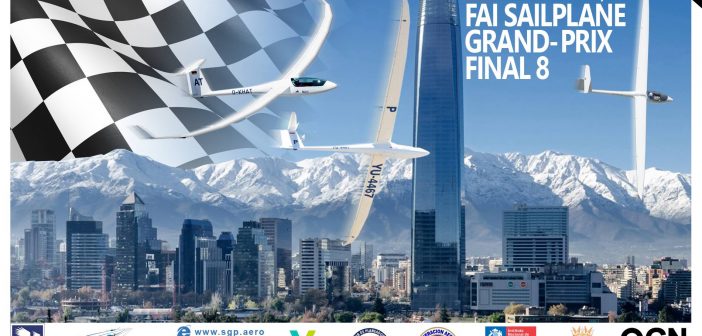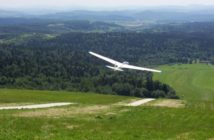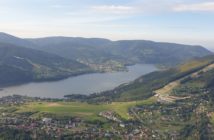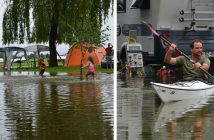(OPENSOARING, 24. januar 2018, komentarji z različnih FB)
Toliko vprašanj po velikih tekmovanjih že dolgo ni bilo. Pa je to res? Mnogi jadralci že dolgo opozarjajo, da je pri tekmovanjih v jadralnem letenju veliko škodljivega pometanja pod preprogo. Dve nesreči na finalu SGP 2018, če niso bile celo tri, pa je vendarle dovolj močno opozorilo, da se bo moralo na tekmovanjih GP nekaj spremeniti. Se bo res?
Luka Šalehar
»Nimam posebnega komentarja s tekmovanj finala SGP 2018 v Čilu, ker sem spremljal samo rezultate in ne live trackinga. Kawa me zmeraj znova preseneča s svojo konsistenco letenja, veseli me tudi rezultat Boštjana, še posebno, ker je bil v Čilu prvič. Top 3 lepo kaže, da je čisto vseeno, katero 18-metrsko mašino letiš, važno je, da veš, kaj delaš. Drugače pa mi je za nacionalnost zmagovalca popolnoma vseeno. Top 4 glede mašin, ko sem pogledal rezultate. Izjemno žalosten sem glede novice o Tomasu. Zdi se mi, da so bili nekateri piloti na tekmi samo zato, da so zapolnili štartni prostor.
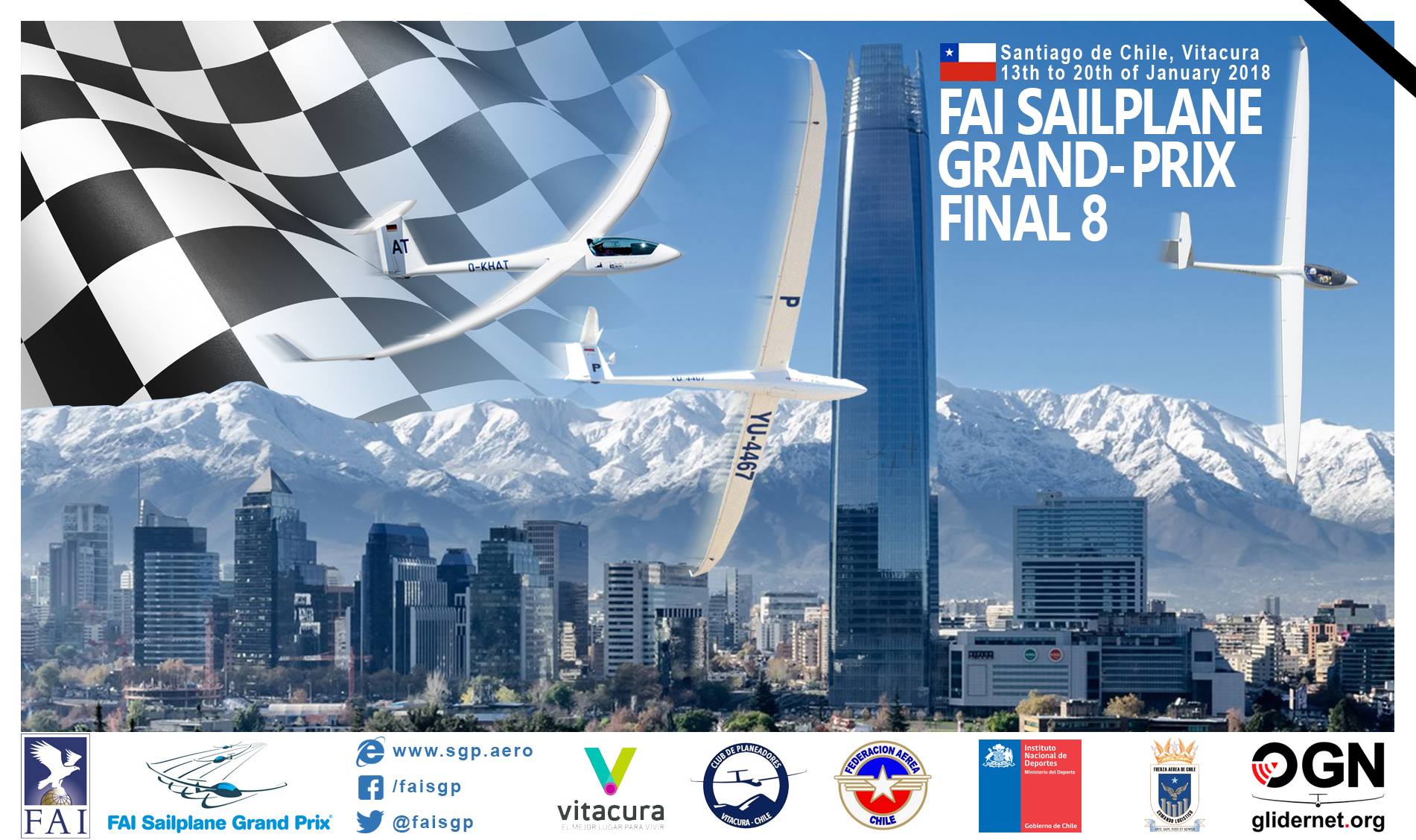
Sklepna naslovna fotografija FAI SGP 2018 – z žalnim trakom
Menim, da je Grand Prix koncept precej dober, ampak zato, da se ljudje na tekmah ne bi pobijali, je treba spremeniti način izobraževanja. Glede revolucije, ki bi morda nekoč kaj spremenila pri jadralnih tekmovanj, ne morem povedat ničesar, ker sem od jadralnega letenja zadnja leta preveč odmaknjen in se s tem vprašanjem nisem kaj dosti ukvarjal. Že dolgo nisem sedel v jadralnem letalu. Seveda pa se bom vrnil v kokpit. Pa da še malo elaboriram glede nezgod v jadralnem letenju – v nasprotju z ostalimi visoko tehnološkimi športi, kot je, denimo, F1, v jadralnem letenju napak pilotov ne moramo reševati s tehniko.«
I’m so very, very sorry to hear this news. We’ve been watching, in our thousands, and enjoying the contest from the comfort of our desk and living rooms. Over the course of the last week Thomas and his fellow competitors have provided hours of pleasure and excitement. They are the pioneers of this embryonic format of the sport we love. All competition glider pilots can relate to their experiences and emotions, as well as have a perspective on the risk. It is, after all, a sport inherently centred on risk. But we often don’t think quite so deeply about the bodily risk, which tragedies such as this put it into sharp focus.
For such an enjoyable and successful week to end this way is beyond cruel. I’m so sad for the organisers, fellow competitors, but mostly of course, for Thomas’ family. I send all my sincere condolences.
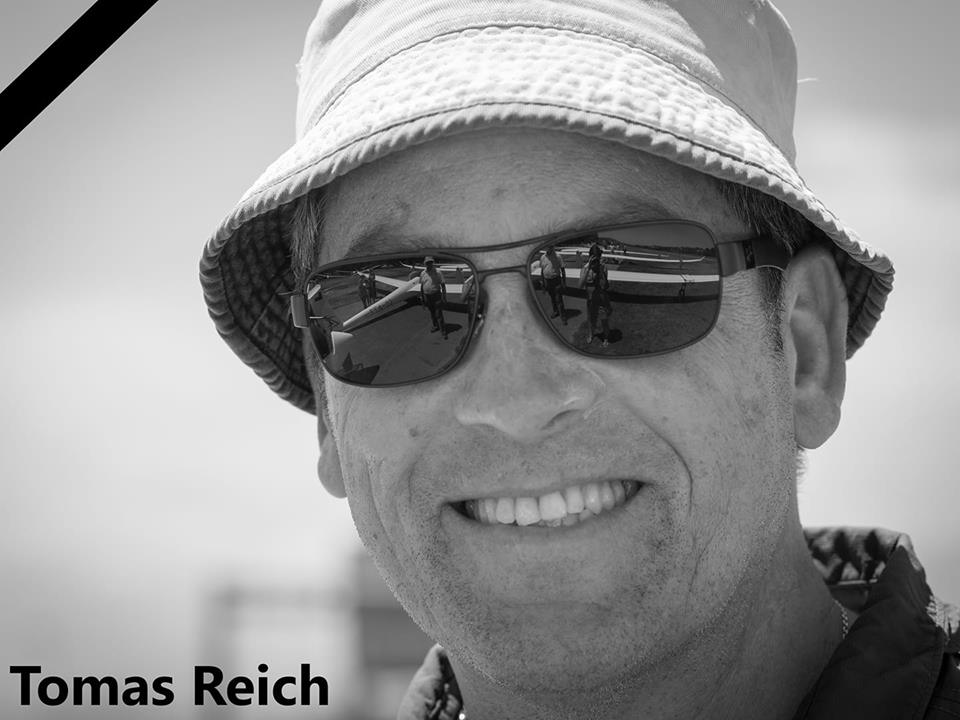
Tomas Reich
Condolences to the family and to all of the organizers from the soaring pilots of New Mexico. Here we use the term “final glide” for a glider pilot who has passed on and his friends and family can take at least some small comfort in knowing that he made that “final glide” doing what he really loved to do …
Duster
Tragic. Slight correction; I think Mr. Reich’s contest id is ZZ, not GN (also according to his Facebook info). One can review the online tracker just before he moves beyond the FOV. Start @ 1:45:00 where ZZ appears to be moving to align with a CCW gaggle at an altitude similar to the others. You can see him make a correction, but instead of joining the group, he turns abruptly westerly beyond view. I don’t think he re-appears after that, though there is data coming from his ship well forward of that timepoint.
https://youtu.be/LgR7KkNXyWI?t=6309
Krasw
Very sad news. Safety of WGC events has been appalling for decades and if you calculate accident rate / participants or flight hours in Grand Prix events, it must be at least tenfold, probably more. This is not acceptable, and still we accept it year after year. Yes it’s beautiful, exhilarating and media-sexy to compete few meters from mountains but this is crazy. If they would have same accident rate in motorsports, events would be simply forbidden as too dangerous.
AS, Uli
Not knowing anything about the WGC safety related rules myself, what is it in their rules that makes WGC events more dangerous than others?
Krasw
Generally speaking it is outlanding accidents and midair collisions. 99% of the problem is poor judgement and unnecessary risk taking of pilots, every single accident is because “pilot error”. Rules are not the problem, though probably there could be rules that penalize instead of reward risk taking.
Andreas
Taking in count Klaus Kalmbach’s accident (which was of the type that usually ends fatal), the Chile Grand Prix had two extremely bad accidents in a starter field of 20 pilots, that’s one out of ten. Glad that someone mentions that this accident rate is unacceptable.

Aldo in Boštjan
Aldo Cernezzi, www.voloavela.it
I’m also “glad” someone talks about it. I really just can’t stand those facebook and SGP posts about the celebrations, the beers and the contest about who’s having the happiest closing party after watching the race online. Doesn’t anyone of them know a human life was lost to his family?
GP gliding has proved more dangerous than WGC over the years. The loss of Herbert Weiss in NZ (please correct me if I’m wrong) was also followed by denial. Interviews were all about the excellent soaring and the sporting outcome of the final.
I have my own ideas or opinions as to why it is so dangerous. I’ve been flying 2 or 3 GPs in my life. My experience was of strong emotions I had never lived again (up to the GP) since childhood. The kind of “my friends are leaving me out” or “please wait for me I want to be a member of the group” sort of thing. I was surprised I felt strongly as an adult during a gliding competition.
This put a lot of pressure on me, and it’s easy to predict that my decision making processes may be negatively affected. On the other hand, one might counter-argue that the placement point system easily leaves you at Zero points for the day, so the decision to just quit the race should in facts be easier.
In my opinion, while each pilot certainly is responsible for safety, a coaching system or a brief session with a “shrink” specialised in high-risk sports would be recommendable. Especially as the GP formula has failed to bring in sponsor money, and the remaining objective is that of a wider awareness of gliding as a competitive sport in the attention of the general public. just my disappointed and sad 2cents.
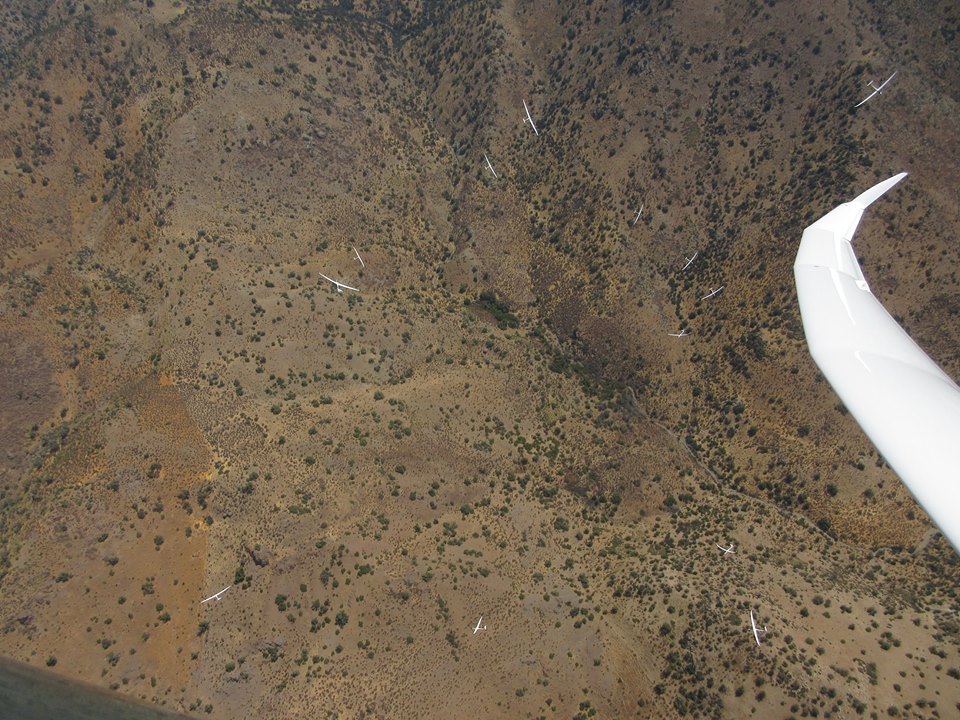
Fotografija z vrha prvega dviganja zadnjega dne. Tilo Holighaus gave us this amazing picture of the first thermal he was on the top with almost all the other pilots in the picture! Foto s strani organizatorja.
Tango Eight
The way I read it, news of the disaster came later. No one celebrates such a costly win! At least I hope not. Best regards, Evan Ludeman
Branko Stojković , XYU
It would seem GP scoring, by its nature, generates more risk than more traditional racing formats. One additional turn may cost 5 points out of 10 in GP but 1 point out of 1000 in a traditional format. Combine that with sending pilots over hostile terrain many are unfamiliar with and weak soaring conditions and you have a recipe for disaster.
This is terrible news! IGC needs to do something about safety at WGC and GP events, as well as at all other gliding contests! For starters, IGC must establish a portal where reports and analyses of all accidents and incidents in all IGC sanctioned competitions will be posted, including the IGC files and including any corrective actions taken. The culture of sweeping the accidents and incidents under the carpet so that the organizers can claim that they had a successful competition needs to stop and that needs to happen very soon.
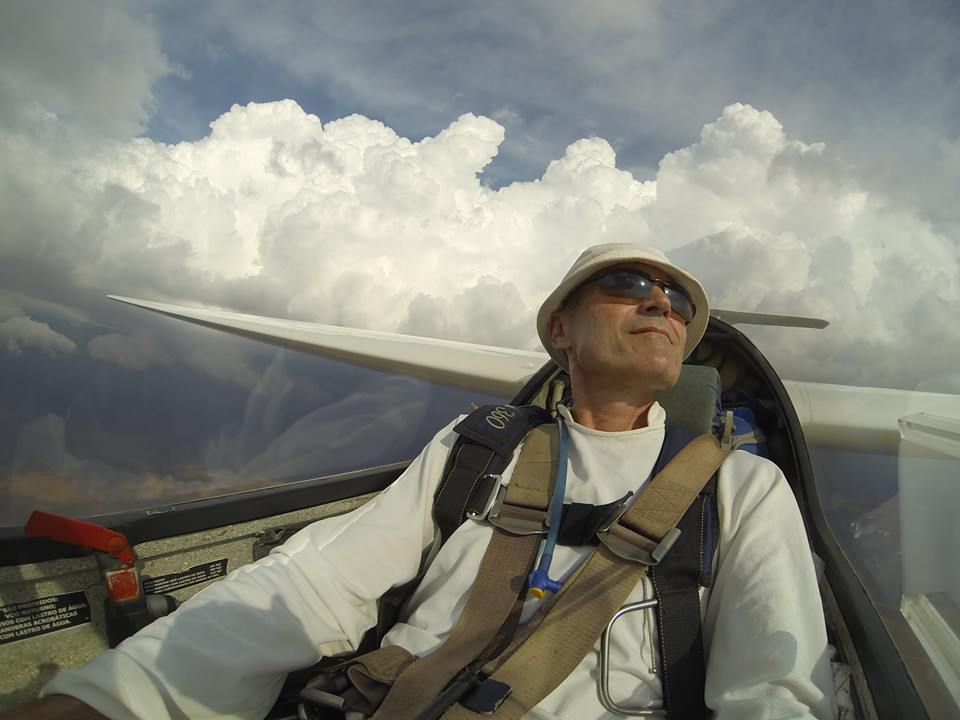
Branko Stojković
I have personal experience in these matters and I think that this tragic event is an opportunity to change the prevailing culture of downplaying and ignoring the dangers of our sport.
A year ago, as a Serbian team captain at WGC in Benalla I witnessed many unsafe events, including two midairs. I sat in a number of team captain’s meetings and pilot’s briefings where these events were discussed, but no concrete or decisive action was taken and no pilot was penalized for unsafe flying.
Back in 2014, during the last practice day before the WGC in Rayskala, Finland I myself, flying an Arcus-T, came frighteningly close to causing a major accident right at the Rayskala airfield in front of many onlookers. This accident, which I somehow managed to avoid, could have resulted in multiple injuries and/or fatalities. However, the psychological damage to the two of us inside the glider, and to the fellow glider pilots on the ground that we nearly crashed into, wasn’t avoided. I reported the incident to the safety committee and submitted to them my IGC log file. I subsequently had a couple sessions with the safety committee members, in which we discussed what happened. After that, I was allowed to fly in the competition without any repercussions. The incident was never officially mentioned, let alone reviewed and analyzed.
Dan Daly
They said in a news post on Jan 21 ( http://sgp.aero/finals2017/news_add_here/sgp-news/tomas-reich.aspx ) that they informed them after the prize-giving: “The news of Tomas death was relayed to the competitors and organisers at Vitacura a short time after the closing ceremony of the contest” so it sounds like no one there knew. They were probably watching the race to see if they could find out what happened – I would have too.
As for the accident during the practice period, they posted a video of the recovery on YouTube on Jan 14 and in the comments said: “We are delighted that Klaus is ok and recovering, probably partly due to the safety cockpit structure of his JS1 sailplane and the bushy area he hard landed in. We will keep you updated during and after the world GP Chile 2018.”
They did mention during a grid walk video that the pilot was watching from his hospital bed and was awaiting medical flight back home, but nothing more was said …
On the YouTube commentary one contributor mentioned at one glider was damaged on the third last day on landing. I don’t know if that happened (it wasn’t reported), but the glider didn’t fly the last two days. Accident reporting, in my opinion, is important. I understand that it is difficult while trying to attract a wider audience, but being more open will prevent a reporter sensationalizing what would likely be termed ‘an accident reporting cover-up’. In Kawa’s book “Sky Full of Heat” p 76: “… when you read the accounts or official reports of accidents, you question yourself and consider what you would have done in a similar situation.” Where are these accident reports for SGP? By the way, section 1.6 “Why are you still alive?” starting on p 72 of the English translation is a must-read.
I know FAI/IGC do some safety videos of problems seen in contests – I saw one when crewing at the first Pan American Glider Championships 2015 on a mid-air collision (didn’t say which one; gliders were anonymized) at a previous level 1 or 2 competition. It is unfortunate that they don’t release such videos for contest organizers to use for safety talks unless it is at a L1 or 2 contest (I asked). It would be valuable for FAI/IGC to create a public place where all the glider pilots could benefit from the accounts. These lessons are paid for with the blood of our friends.
Paul T
The radio commentary on the last SGP task was interesting – especially from the Chilean commentator. ‘We don’t fly in that area so low’ or similar words where repeated a number of times for the southern portion of the task. Whether this is related to the accident or not I do not know – but it certainly seemed boundaries where being pushed a little during that task.
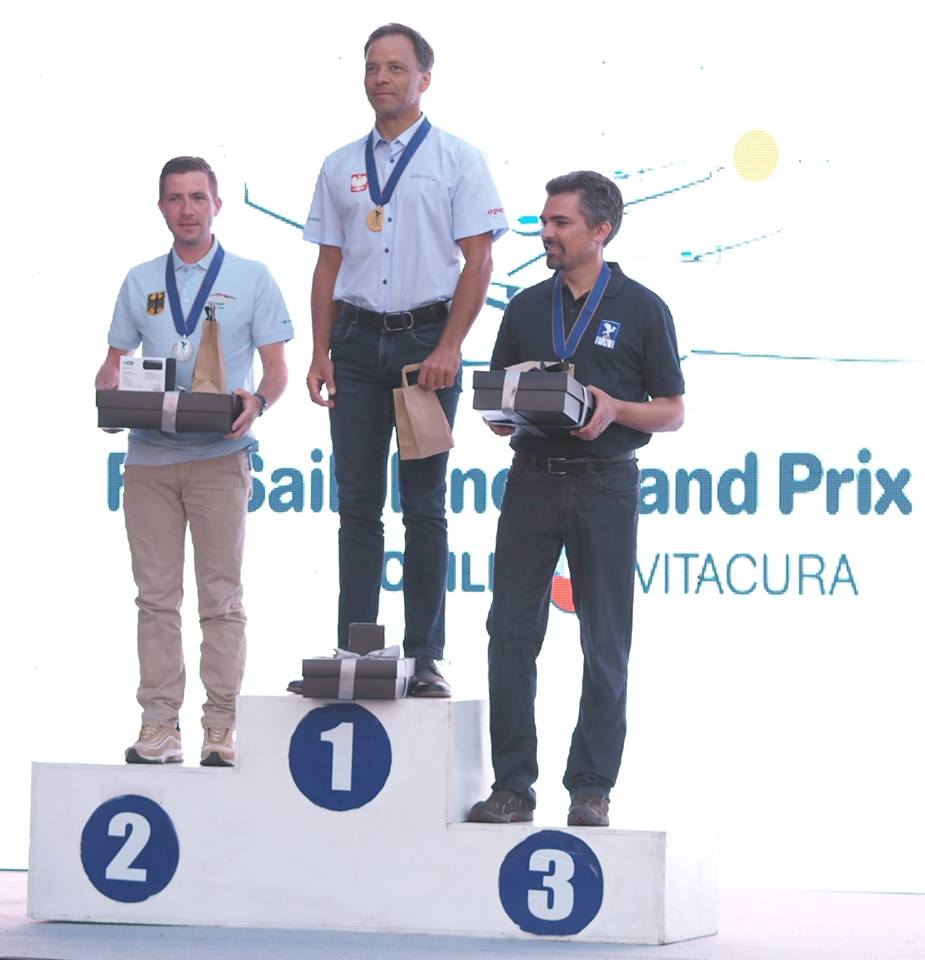
Kakšne so vrednote SGP?


